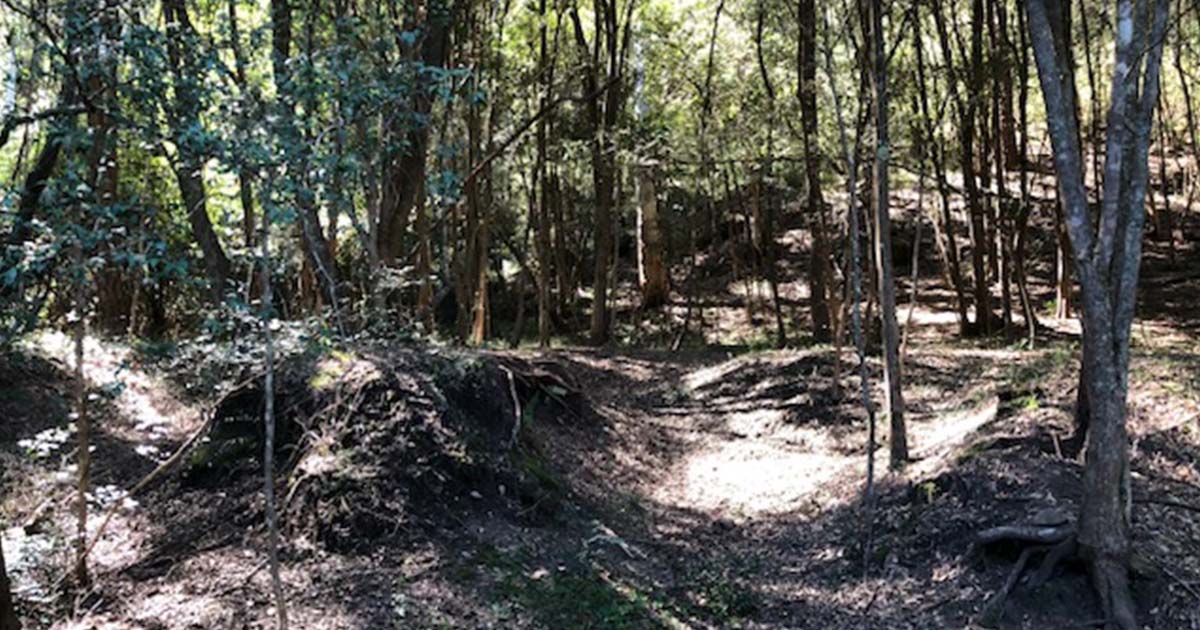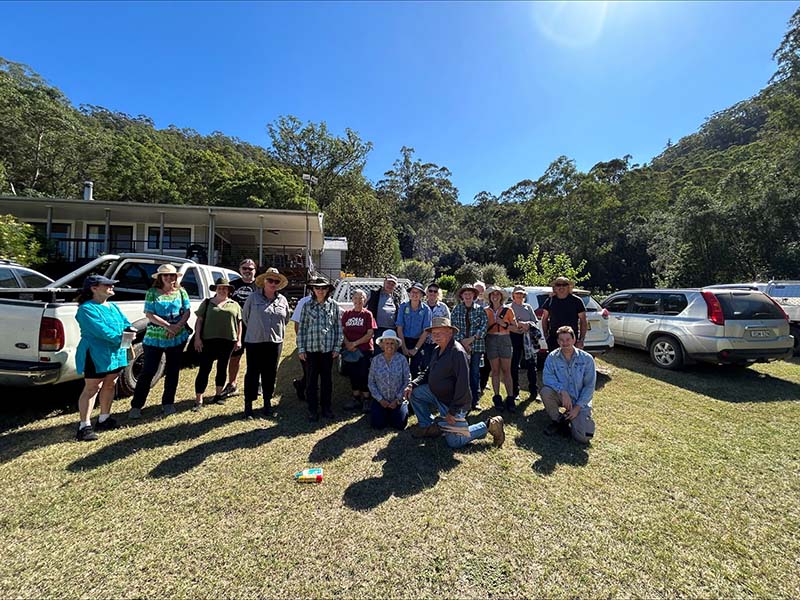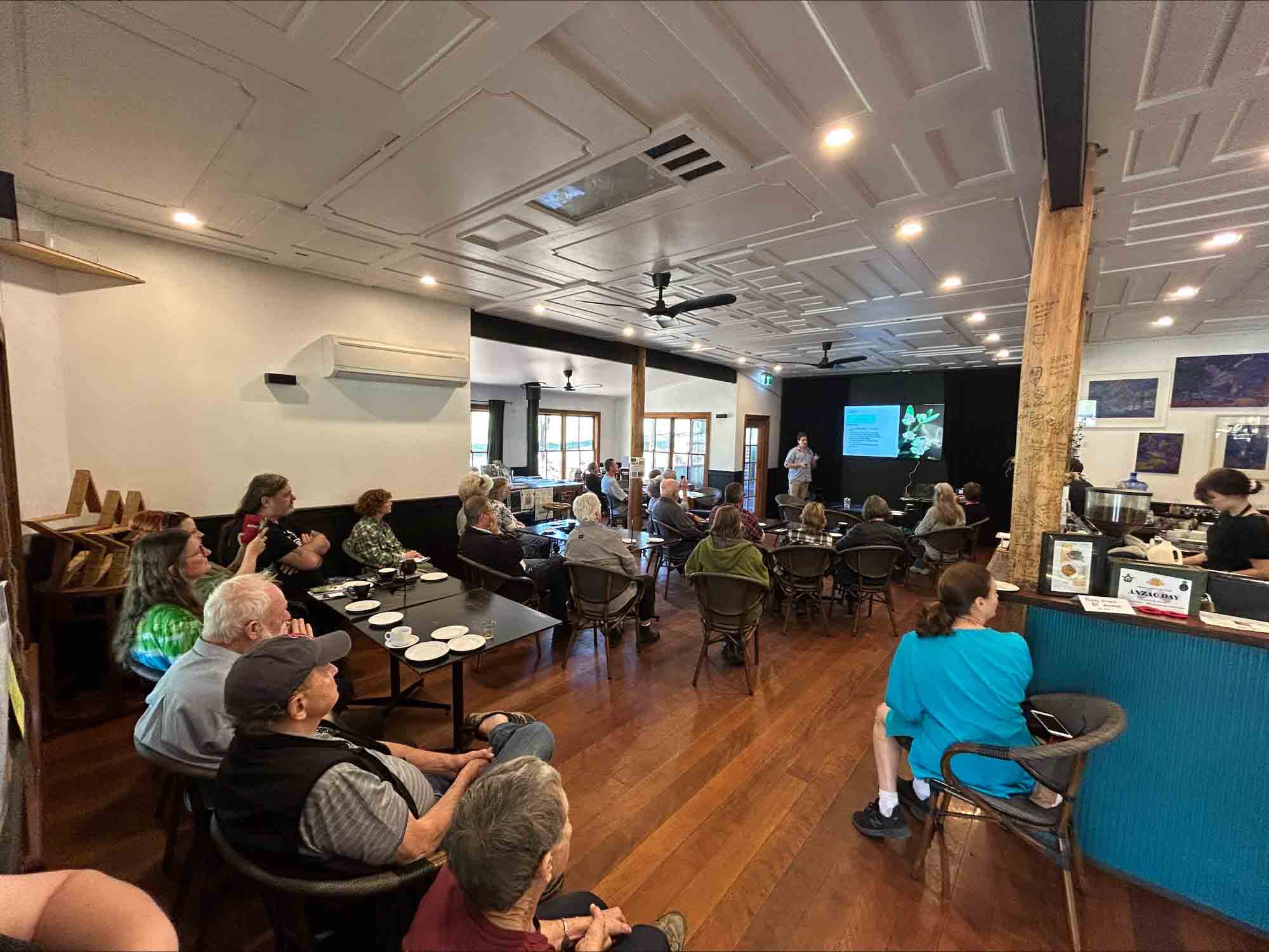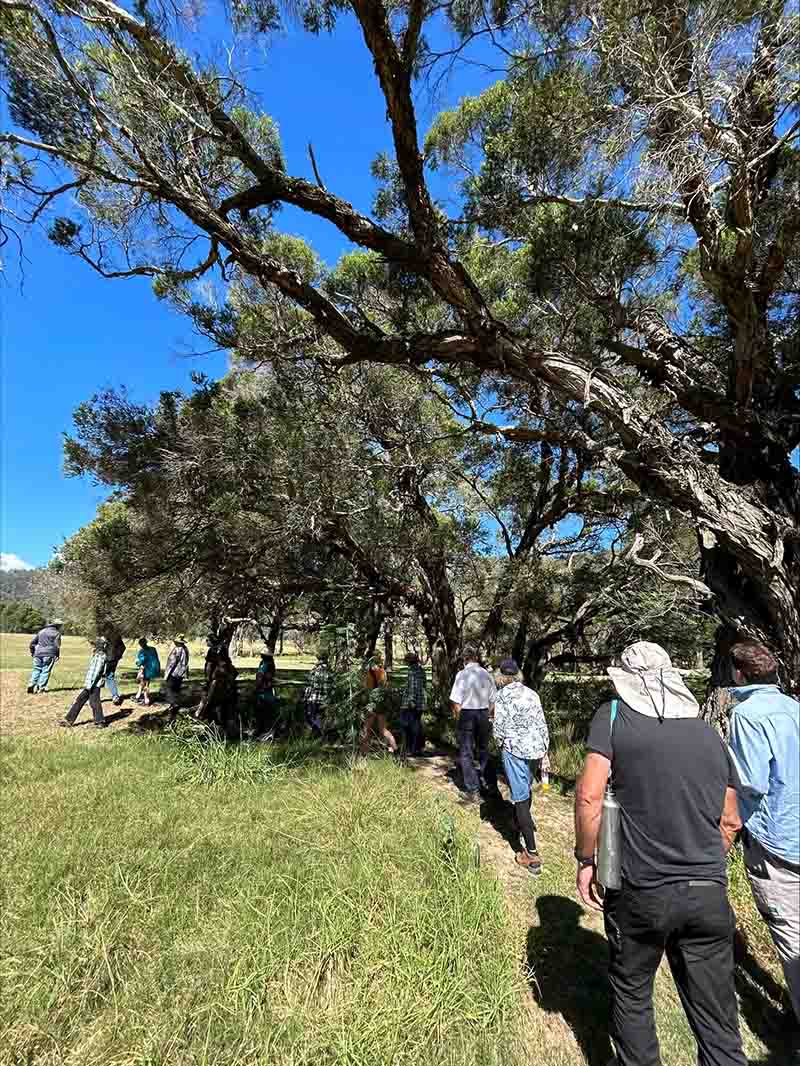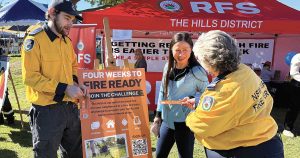by Tim Pallister
The trip to a Threatened species investigation workshop organised by the local landcare coordinator of Hawkesbury Nepean Landcare Network, Monique Bailey, began near Dural, through Glenorie and Wisemans Ferry out to St. Albans in the Macdonald Valley, northwest of Sydney.
We easily found our way to the Pickled Wombat on Bulga Rd, after crossing the truss steel bridge over the Macdonald river into the rural town before parking out front of the cafe with latecomers parking on the grass nature strip outside because of our numbers.
Those gathered were representatives of the hard working local land owners, Macdonald Valley River Keepers, Macdonald Valley association, Hawkesbury River County Council, Western Sydney University, NSW Biodiversity Conservation Trust, Greater Sydney Local Land Services, HEN [Hawkesbury Environment Network], and CHEN [Cattai Hills Environment Network].
We soon sat down for a community workshop after a busy meet and greet where those present were advised of the need for a wildlife survey in the Macdonald valley. Our first speaker, Dr. Michelle Ryan from Western Sydney University, spoke of her Platypus research with E-DNA testing for the Hawkesbury Nepean river system which was followed up by a catch and release program to check on the health of the population in their urban home range.
A good population was found in the many creeks of the catchment because they are reliant on clear water, with a large and healthy riparian zone for their invertebrate food.
The next phase of the research will see the program expand out into the Macdonald Valley catchment next year to confirm a rural population is present. This work is essential to compare the DNA pool similarities/differences between the disparate populations and confirm their place in the landscape.
Our second speaker was Stephan from the NSW Biodiversity Conservation Trust who spoke of the known local threatened species starting with the Brush Tail Rock Wallaby then a Daisy and finally a grey leafed bush.
All three were subject to the same problem of isolated home ranges with no connectivity to others creating a genetically similar group which is vulnerable to becoming locally extinct.
This isolation has produced localised hybridisation of some gum trees due to environmental pressures while also serving as reserves for temperate rainforest species. A Macdonald valley map was produced to illustrate the low numbers of confirmed threatened species sightings spread out within the dominant native plant community.
So the importance of online reporting tools, community engagement, citizen science, research projects and surveys ensures all species are fully represented which aids in their conservation. Our attention was sometimes diverted with the delicious food served for morning tea and lunch during the workshop.
Our field day hosts Neil and Elaine introduced themselves with those continuing out to the property given rural directions to get to the site before a caravan of vehicles headed off to the valley nearby where we drove up to the home paddock backed by a sandstone cliff topped escarpment and creek.
We parked below the house and a good sized kitchen garden where We were given some directions for the tour of recent works and a reminder from Neil that the two recent floods had reached the fence below the house and then the driveway and foundations of same.
The group congregated on the path and walked out past the new dam through the gate with young pioneer seedlings skirting the lower bank of the dam where soil was spread when it was constructed showing the seedbank was waiting and ready to grow. In the distance were substantial old Swamp Melaleuca’s and piles of felled Black Willow trunks with a no mow zone ready for further plantings so the owners can move a fence line in the future giving
access to the wildlife that come out of the bush.
We next headed to the remnant bush by crossing the creek to access the hillside under an unbroken canopy of large trees that included some claw marks on a grey gum trunk [Eucalyptus punctata], there standing in a deep layer of leaf litter, we had an unobstructed view of the surrounds because of the lack of mid-level plants.
The group split in two with most following Neil to the Lillypilly [Syzygium] stand while the others stayed back with Elaine and explored further the rainforest. While talking about what we found we heard a string of bird calls one after another coming out of the bush ahead of us clearly a little higher up the hill and ahead of the other group, with a Satin Bowerbird, a Butcher Bird and Black Cockatoo amongst the calls to be recognised from the vocal Chameleon of the bush a Lyrebird.
The groups merged again to continue walking further up the hill where there were more remnant rainforest trees that included the Grey Myrtle, Sandpaper figs and Cheese Trees, with small fruit resembling a cheese wheel which concluded the day’s activity. We all walked down past the house through the garden to the parked vehicles for some final thoughts for the day before the group slowly headed off in their vehicles.
Exiting the property, the return trip to the Webb’s Creek Ferry was broken up with the same sweeping corners around the hills and valleys that drain into the Macdonald River where recent river flooding was now very visible as mud on tree trunks and the adjacent landscape.
Photo credits: Tim Pallister and Monique Bailey.

